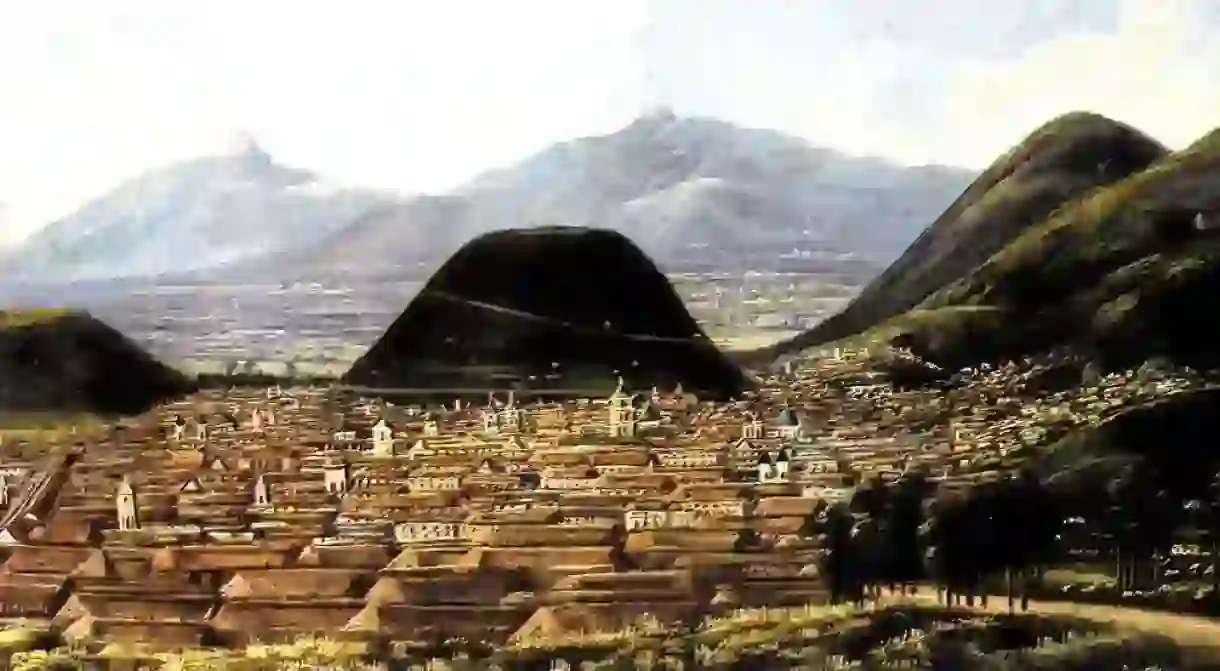An Insider’s Guide to the Ancient Quitu of Ecuador

When the Spanish conquered the lands around Quito, they found an Incan ruler and a culture that had not yet fully integrated with their overlords, the Quitu. Most of what we know about this ancient tribe is gleaned from Spanish chronicles and the few archeology sites that were not destroyed after the Spanish conquest.
History
Archaeological remains in and around Quito place the existence of the Quitu culture firmly on the slopes of Pichincha as far back as 2000BCE. According to Juan de Velasco, an Ecuadorian Jesuit and historian who wrote Historia del Reino de Quito in 1789, the Quitu were supplanted by the Cara civilization, creating a new tribe, often called the Quitu-Cara. Although his theory and the compelling story of the Kingdom of Quito has been disputed by modern historians, it is often repeated as fact, even in Ecuadorian history books.

According to Velasco, the Cara came to Quito from coastal Ecuador around 980CE. The Cara replaced the leader of the Quitu with a shyri, or tribal leader, and thus founded the Kingdom of Quito. In the following 15 generations, the Cara spread into neighboring regions, like Cayambe and Latacunga, leaving fortresses and troops behind in each location. Velasco often equates the Cara with other cultures, like the Caranqui and the Cayambe, probably taking the oral history of many tribes and mixing myth with historical fact.

When Túpac Inca arrived in the 1480s, he conquered the Quitu, and his son, Huayna Capac, eventually built a secondary capital, Tawantinsuyu, on what is now modern day Quito. To prevent the conquering Spanish from taking Tawantinsuyu, Incan General Rumiñahui burned it to the ground, destroying many artifacts of both Inca and Quitu origins. The Spanish took over the city, and any remaining Quitu were subjugated. Remains from both Quitu and Inca culture were destroyed by the Spanish; the ruins that remain today were found generations later.
Ancient Sites of the Quitu
Rumipamba
The Rumipamba Archaeological Park, one of the several pre-Incan sites in and around Quito, sits high on the skirts of the Pichincha volcano and provides excellent views of the capital city. When archaeologists excavated in 2001, they found that volcanic eruptions prevented continual occupation, but that humans did live here over several time periods. During the Era of Integration, 500–1500CE, the Quitu lived in earthen homes with roofs of straw. Groups of homes were surrounded by stone walls. Burial sites located near the homes were shallow and the deceased buried in pottery vessels.
http://instagram.com/p/BXbH4RdDU1p/
La Florida
The ancient tombs in the modern day Quito neighborhood La Florida were discovered in the 1980s, but were not excavated until 2004. While the tombs are dated from 200–600CE, an old dwelling found nearby is dated to 2000BCE.
The deepest tomb, and also the oldest, held four individuals. Immediately above in a new level were two shelves, each holding six individuals. All were found wrapped in cloth, in a seated position with knees held to their chests. At the deepest level, one man was found with a bag of Spondylus shells, a rich red oyster shell that held great value to pre-Incan cultures in Ecuador.
Archaeologists also found traces of potato, chocho (a native legume), melloco (a native tuber), and quinoa, as well as deer and guinea pig, all foods still consumed by present day native Ecuadorians.
Rumicucho
Rumicucho, located near the modern day Mitad del Mundo, is home to pre-Incan ruins with some Incan construction. Although the Inca used the location from 1500–1534CE, the ruins suggest that the local Cara tribe built the original structures as a religious and ceremonial center. This site falls almost exactly along the equator, meeting with another ancient site called Cochasquí. From the ruins, it is possible to see the mountainside where the ancient Mitad-del-Mundo existed, Catequilla.

Catequilla
When most tourists visit the Mitad del Mundo just outside Quito, Ecuador, they learn how French scientists measured the equator. What they might not realize is that the Quitu or the Cara marked the center of the world on a nearby mountain top, called Catequilla. From the height of Catequilla, it is possible to see in all directions and identify 25 different sites that were used by ancient people as villages, ceremonial centers, observatories, and fortresses.
Archaeologist Oswaldo Tovar identified many ceramic pieces found in this location from the Quitu-Cara, the Inca, and Spanish colonists. Perhaps the most interesting find at Catequilla is an ancient stone disc. Stones are cobbled into the dry mountainside in a perfect circle. Locals believe the flat surface was used during the wheat harvest while archaeologists note that the circle corresponds to 27 astronomical alignments.













